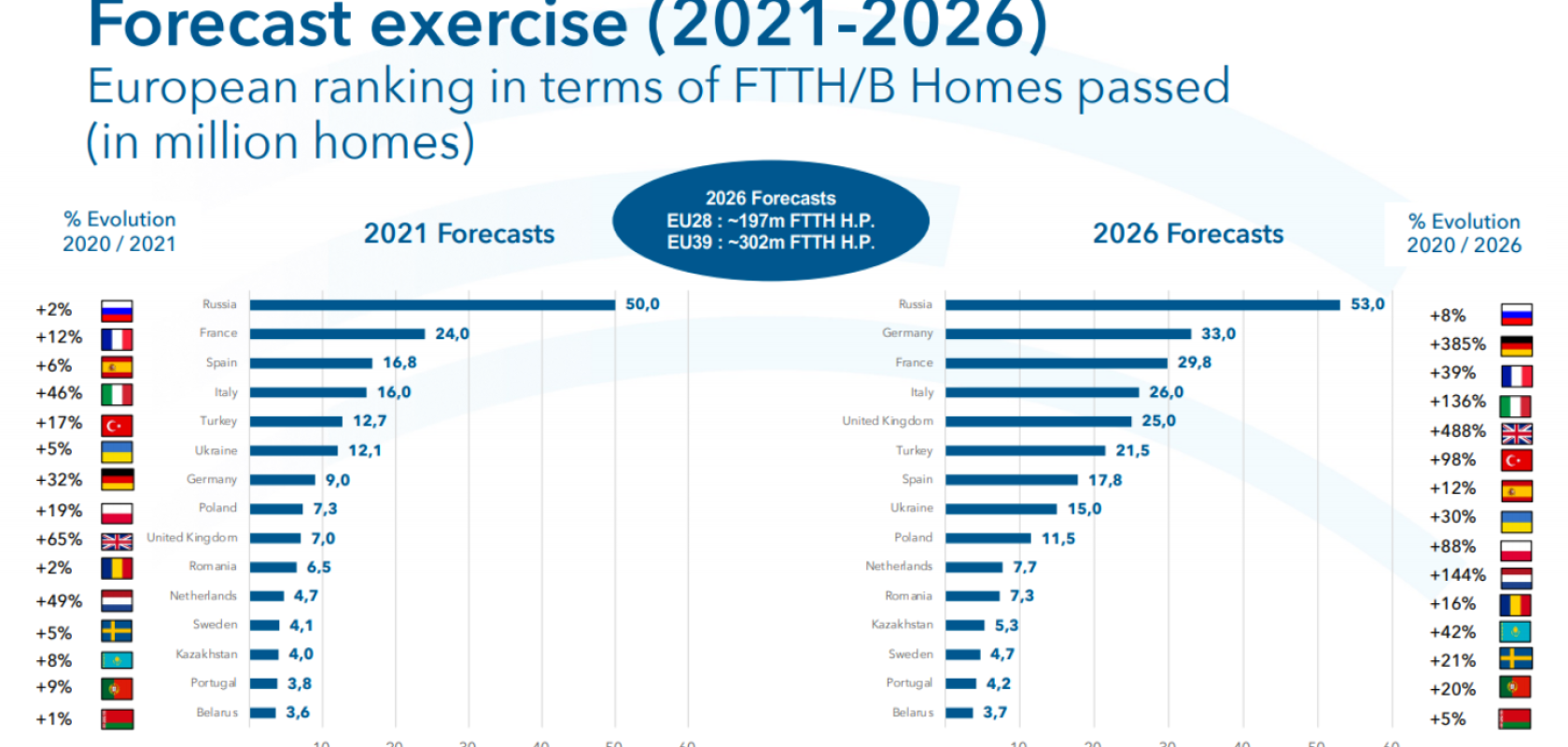The FTTH Council Europe has released two new reports at the virtual FTTH Conference Europe event.
The latest FTTH Forecasts for 2021 and 2026 were revealed, alongside an overview of fibre deployments in rural areas.
When it comes to the forecasts, the council said that numbers are consistent with previous estimates, and plan for around 197 million homes passed for FTTH/B in 2026 in EU27+UK compared to 118 million this year, with Germany, the United Kingdom, the Netherlands and Italy to experience the most remarkable growth.
The report also predicted that the number of subscribers would reach 135 million in 2026 for EU27+UK and 197 million for EU39 countries (27 EU members plus the UK, as well Belarus, Kazakhstan, Russia and the Ukraine, and Iceland, Israel, North Macedonia, Norway, Serbia, Switzerland and Turkey). Estimates show that in 2026, the FTTH/B take-up rate for EU27+UK will be slightly higher (68.7 per cent) than for EU39 (65.3 per cent), with both experiencing a steady evolution.
Key drivers for fibre deployment include the pandemic, which led to more data traffic and more demand, and has resulted in private investors boosting their deployment projects in favour of FTTH/B to support the ongoing traffic increase. Adding to this, said the council, the launch of national programmes (infrastructures and digitalisation) and new European digital targets for 2025 and 2030 will lead to the acceleration of full-fibre connectivity across all European countries.
Vincent Garnier, director general at the FTTH Council Europe commented: ‘This trend will be intensified by new usage patterns which are encouraging operators to migrate to FTTH solutions, capable of delivering new services while contributing to the sustainability challenge. The report shows there is still a massive growth potential in terms of connectivity in many EU countries, but overall deployment is progressing at a rapid pace. However, even with the infrastructure in place, the FTTH Council Europe considers that there is still a long way to go to reach a fully digitised society. We strongly believe that to embrace the next digital decade and shape Europe’s digital transformation by 2030, take-up is the next challenge, and we call on policy-makers to take the necessary measures for end-users to benefit from the world of new possibilities offered by full-fibre connectivity.’
The second launch at the event was the council’s first official report about full-fibre in rural Europe, which provides a general overview of the goals, actions and results of FTTH deployments in rural areas in a selection of 10 EU countries (France, Germany, Italy, Netherlands, Poland, Portugal, Romania, Spain, Sweden, and the UK). While more than two-third of rural households currently have next-generation access; FTTH/B coverage is still lagging behind in non-dense areas with only 22 per cent households covered, compared to 45 per cent for all territories in EU27+UK.
The report also found that FTTH/B is progressively deployed, but at a very different pace amongst the countries under study. While Spain is championing the ranking with 60.5 per cent rural FTTH/B coverage in 2020, Germany has still a long way to go with only 9.8 per cent covered. However, it is worth noting that this represents a higher proportion of rural homes than the EU average and indicates a more balanced rollout across rural and urban areas of Germany.
Eric Festraets, president of the FTTH Council Europe explained: ‘The FTTH Council Europe believes that rural areas should benefit from the same services as urban areas and therefore public funds should help bridging this digital divide where private financing is not possible due to the lack of business case. However, to make the most use of public money, only full-fibre projects should qualify for fundings as it is the most future-proof and environmentally friendly infrastructure.’


